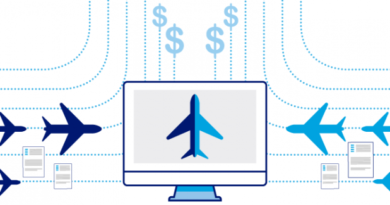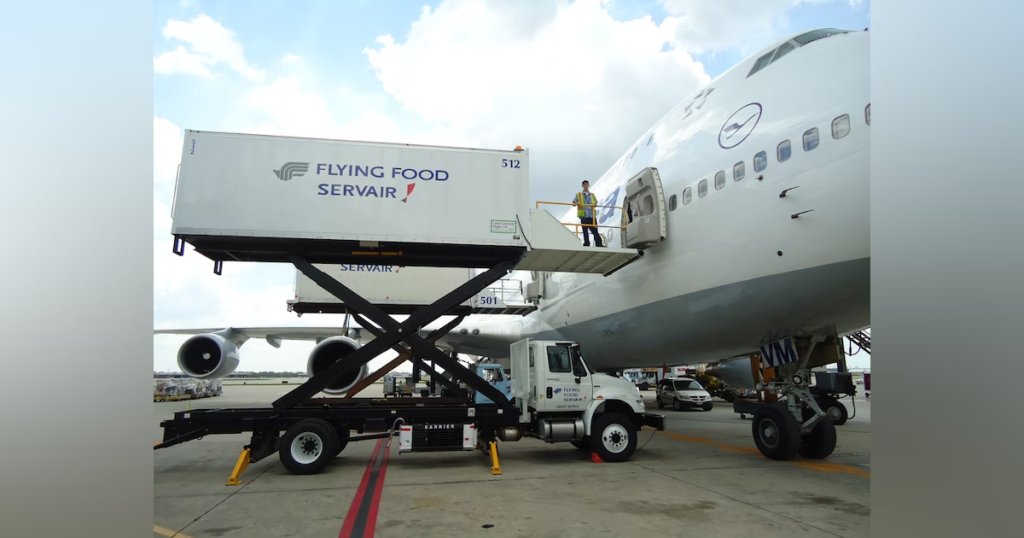Free Flight Dispatcher Course (4months)
Flight Dispatcher:
Brief Job Description: A Flight Dispatcher monitors weather conditions, aircraft position reports, and aeronautical navigation charts to evaluate the progress of flight
Personal Attributes: Personal attributes would include strong communication skills and good analytical skills. This work would typically entail a stressful situations during flights and thus the personal should have ability to manage stressful situations.


Safety and security procedures:
Comprehending the safety and security procedures
PC1. comply with the organisation’s safety and security policies and procedures
PC2. comply with the regulatory guidelines on safe conduct of operations and maintenance of conditions to thwart any acts of unlawful interference
PC3. report any identified breaches of safety, and security policies and procedures to the designated person
PC4. coordinate with other resources at the workplace (within and outside the organisation) to achieve safe and secure environment
PC5. identify and mitigate any safety and security hazards like illness, accidents, fires or acts of unlawful interference if it falls within the limits of individual’s authority
PC6. report any hazards outside the individual’s authority to the relevant person in line with organisational procedures and regulatory guidelines
PC7. follow organisation’s emergency procedures for accidents, fires or acts of unlawful interference
PC8. identify and recommend opportunities for improving health, safety, and security to the designated person
PC9. complete all health and safety records are updates and procedures well defined

Knowledge and Understanding
Organisational Context
KA1. hazard identification and risk management as defined within the organisational policy and procedures
KA2. regulatory requirements and organisation’s procedures for maintenance of safety and security standards and individual’s role and responsibilities in relation to this
KA3. how and when to report hazards
KA4. the limits of responsibility for dealing with hazards KA5. the organisation’s emergency procedures for different emergency situations and the importance of following these.
KA6. importance of maintaining high standards of safety and security KA7. implications that any non-compliance with safety and security may
have on individuals and the organization
Technical Knowledge

KB1. different types of breaches of safety and security and how and when to report these
KB2. evacuation procedures for workers and passengers
KB3. how to summon medical assistance and the emergency services, where necessary
KB4. how to use the health, safety and accident reporting procedures and the importance of these
KB5. regulatory guidelines on dealing with safety and security emergencies
Core Skills/ Generic Skills

| Writing Skills |
| The user/ individual on the job needs to know and understand how to: SA1. complete accurately well written report in English language detailing the situations of emergency with attention to detail |
| Reading Skills |
| The user/individual on the job needs to know and understand how to: SA2. read instructions/guidelines/procedures/rules |
| Oral Communication (Listening and Speaking skills) |
| The user/individual on the job needs to know and understand how to: SA3. listen to and orally communicate information with all concerned |
Professional Skills

| Decision Making |
| The user/individual on the job needs to know and understand how to: SB1. make decisions on a suitable course of action or response if permitted by the authority matrix |
| Plan and Organize |
| The user/individual on the job needs to know and understand how to: SB2. monitor efficient functioning of all activities SB3. plan and organise work to achieve targets and deadlines |
| Customer Centricity |
| The user/individual on the job needs to know and understand how to: SB4. communicate with customers in a courteous manner SB5. maintain effective relationship with the customers |
| Problem Solving |
| The user/individual on the job needs to know and understand how to: SB6. identify trends/common causes for errors and suggest possible solutions to the supervisor / management SB7. identify and correct errors Analytical Thinking The user/individual on the job needs to know and understand how to: SB8. analyse best possible solutions (cost, time, effort, etc.) suited for operations Critical Thinking The user/individual on the job needs to know and understand how to: SB9. concentrate on task at hand and complete it without errors SB10. apply balanced judgments to different situations  Prepare a flight plan Performance Criteria Analysing flight schedule PC1. use the operating system to extract the flight schedule PC2. analyse the flight schedule to identify the aircraft tail numbers and the rotation of each aircraft tail number PC3. extract the relevant information about the aircraft characteristic and performance based on tail number like Extended Twin Engine operations (ETOPS) or any altitude restriction due to Minimum Equipment List (MEL) Gathering of information required for flight planning PC4. interact with various stakeholders to gather relevant information PC5. gather zero fuel weight for the intended flight from load controller PC6. gather meteorological data from the sources as approved by the organisation or the regulatory authority PC7. gather information from maintenance department or any other stakeholder which can impact the performance of the aircraft during its intended flight Creating the flight plan PC8. create a flight plan based on the information gathered in the format approved by the organisation and the regulatory body. PC9. ensure that the flight plan is accurate and contains all the mandated information by the organisation and the regulatory body. PC10. derive the fuel requirement based on the flight plan for the intended flight. PC11. highlight any key areas of concerns for the briefing to cockpit crew. Provide briefing to the cockpit crew PC12. provide a detailed briefing to the cockpit crew with details of route, weather condition, any restrictions on the aircraft, alternate airport details, total load on the flight and the fuel uplift details. Communicate information to various stakeholders for action PC14. file the flight plan with the appropriate authorities in the appropriate manner. PC15. communicate with various stakeholders like Load controller to provide the details of fuel uplift for the intended flight. Knowledge and Understanding Organisational Context KA1. organisation safety policy and procedures, basic compliance to technical requirements and standards; safety and hazards KA2. organisation structure KA3. escalation procedure Technical knowledge KB1. aircraft performance KB2. meteorological reports KB3. rules and regulations pertaining to air transportation KB4. basic principles of computer based flight planning KB5. weight and balance computations KB6. any other technical knowledge as defined by competent authority (Directorate General of Civil Aviation) to meet the requirements of qualification of flight dispatcher KB7. airside safety regulations KB8. aviation security regulations Core Skills/ Generic Skills Writing Skills The user/individual on the job needs to know and understand how to: SA1. write reports as an when required Reading Skills The user/individual on the job needs to know and understand how to: SA2. read the details of any instructions SA3. read and understand the organisation policies & procedures SA4. read complex informative maps Oral Communication (Listening and Speaking skills) The user/individual on the job needs to know and understand how to: SA4. communicate clearly with supervisors and peers SA5. regularly communicate with all employees in the chain of activities to ensure efficient operations SA6. share best practices with peers and subordinates Professional Skills Decision Making The user/individual on the job needs to know and understand how to: SB1. identify areas of concerns which can impact the safety of the intended flight Plan and Organize The user/individual on the job needs to know and understand how to: SB2. monitor efficient functioning of all activities SB3. plan and organize work to achieve targets and deadlines Customer Centricity Not Applicable Problem Solving The user/individual on the job needs to know and understand how to: SB4. identify trends/common causes for errors and suggest possible solutions to the supervisor / management SB5. identify and correct errors Analytical Thinking Not Applicable Critical Thinking The user/individual on the job needs to know and understand how to: SB6. concentrate on task at hand and complete it without errors SB7. apply balanced judgments to different situations  Work Effectively in a Team Performance Criteria Support the work team PC1. display courteous and helpful behaviour at all times. PC2. take opportunities to enhance the level of assistance offered to colleagues. PC3. meet all reasonable requests for assistance within acceptable workplace timeframes. PC4. complete allocated tasks as required. PC5. seek assistance when difficulties arise. PC6. use questioning techniques to clarify instructions or responsibilities. PC7. identify and display a non discriminatory attitude in all contacts with customers and other staff members. Maintain personal presentation PC8. observe appropriate dress code and presentation as required by the workplace, job role and level of customer contact. PC9. follow personal hygiene procedures according to organisational policy and relevant legislation Develop effective work habits PC10. interpret, confirm and act on workplace information, instructions and procedures relevant to the particular task. PC11. interpret, confirm and act on legal requirements in regard to anti- discrimination, sexual harassment and bullying. PC12. ask quest ions to seek and clarify workplace information. PC13. plan and organis e daily work routine within the scope of the job role. PC14. prioritise and complete tasks according to required timeframes. PC15. identify work and personal priorities and achieve a balance between competing priorities. Knowledge and Understanding Organisational Context KA1. The policies and procedures relating to the job role. KA2. The value system of the organisation. KA3. Employee rights and obligations. KA4. The reporting hierarchy and escalation matrix. Technical Knowledge KB1. ask questions to identify and confirm requirements. KB2. follow routine instructions through clear and direct communication. KB3. use language and concepts appropriate to cultural differences. KB4. use and interpret non-verbal communication. KB5. the scope of information or materials required within the parameters of the job role. KB6. consequences of poor team participation on job outcomes. KB7. work health and safety requirements Core Skills/ Generic Skills Writing Skills, On the job the individual needs to be able to: SA1. complete documentation accurately. SA2. write simple reports when required. Reading Skills On the job the individual needs to be able to: SA3. read information accurately. SA4. read and interpret data sheets. Oral Communication (Listening and Speaking skills) The user/individual on the job needs to know and understand how to: SA5. listen to and orally communicate information with all concerned Professional Skills Decision Making On the job the individual needs to be able to: SB1. make appropriate decisions regarding the responsibilities of the job role. Plan and Organise The user/individual on the job needs to know and understand how to: SB2. monitor efficient functioning of all activities SB3. plan and organise work to achieve targets and deadlines Customer Centricity The user/individual on the job needs to know and understand how to: SB4. communicate with passengers and other stakeholders in a courteous manner SB5. maintain effective work relationship Problem Solving The user/individual on the job needs to know and understand how to: SB6. identify trends/common causes for errors and suggest possible solutions to the supervisor / management SB7. identify and correct errors Analytical Thinking The user/individual on the job needs to know and understand how to: SB8. analyze best possible solutions (cost, time, effort, etc.) suited for operations Critical Thinking The user/individual on the job needs to know and understand how to: SB9. concentrate on task at hand and complete it without errors SB10. apply balanced judgments to different situations  Model Curriculum Flight Dispatcher Follow safety and security procedures · comprehend the organisation’s safety and security policies and procedures comprehend the regulatory guidelines on safe conduct of operations and maintenance of conditions to thwart any acts of unlawful interference report any identified breaches of safety, and security policies and procedures to the designated person coordinate with other resources at the workplace (within and outside the organisation) to achieve safe and secure environment. hazards like illness, accidents, fires or acts of unlawful interference if it falls within the limits of individual’s authority report any hazards outside the individual’s authority to the relevant person in line with organisational procedures and regulatory guidelines follow organisation’s emergency procedures for incidents or accidents, fires or acts of unlawful interference identify and recommend opportunities for improving health, safety, and security to the designated person ensure completion of all health and safety records are updates and procedures well defined Prepare a flight plan use the operating system to extract the flight schedule analyse the flight schedule to identify the aircraft tail numbers and the rotation of each aircraft tail number extract the relevant information about the aircraft characteristic and performance based on tail number like Extended Twin Engine operations (ETOPS) or any altitude restriction due to Minimum Equipment List (MEL) interact with various stakeholders to gather relevant information gather zero fuel weight for the intended flight from load controller gather meteorological data from the sources as approved by the organisation or the regulatory authority gather information from maintenance department or any other stakeholder which can impact the performance of the aircraft during its intended flight create a flight plan based on the information gathered in the format approved by the organisation and the regulatory body. ensure that the flight plan is accurate and contains all the mandated information by the organisation and the regulatory body. derive the fuel requirement based on the flight plan for the intended flight. highlight any key areas of concerns for the briefing to cockpit crew. provide a detailed briefing to the cockpit crew with details of route, weather condition, any restrictions on the aircraft, alternate airport details, total load on the flight and the fuel uplift details answer any queries of the cockpit crew with regards to the flight plan. file the flight plan with the appropriate authorities in the appropriate manner. communicate with various stakeholders like Load controller to provide the details of fuel uplift for the intended flight. Work Effectively in a Team display courteous and helpful behaviour at all times. take opportunities to enhance the level of assistance offered to colleagues. meet all reasonable requests for assistance within acceptable workplace timeframes. complete allocated tasks as required. seek assistance when difficulties arise. use questioning techniques to clarify instructions or responsibilities. identify and display a non-discriminatory attitude in all contacts with customers and other staff members. observe appropriate dress code and presentation as required by the workplace, job role and level of customer contact. follow personal hygiene procedures according to organisational policy and relevant legislation. interpret, confirm and act on workplace information, instructions and procedures relevant to the particular task interpret, confirm and act on legal requirements in regard to antidiscrimination, sexual harassment and bullying. ask questions to seek and clarify workplace information. plan and organise daily work routine within the scope of the job role prioritise and complete tasks according to required timeframes identify work and personal priorities and achieve a balance between competing priorities Guidelines for Assessment 1. Criteria for assessment for each Qualification Pack will be created by the Sector Skill Council. Each Performance Criteria (PC) will be assigned marks proportional to its importance in NOS. SSC will also lay down proportion of marks for Theory and Skills Practical for each PC 2. Th e assessment for the theory part will be based on knowledge bank of questions created by the SSC 3. Individual assessment agencies will create unique question papers for theory part for each candidate at each examination/training center (as per assessment criteria below) 4. Individual assessment agencies will create unique evaluations for skill practical for every student at each examination/training center based on this criteria 5. To pass the Qualification Pack, every trainee should score a minimum of 50% in aggregate 6. The marks are allocated PC wise, however, every NOS will carry a weightage in the total marks allocated to the specific QP |







